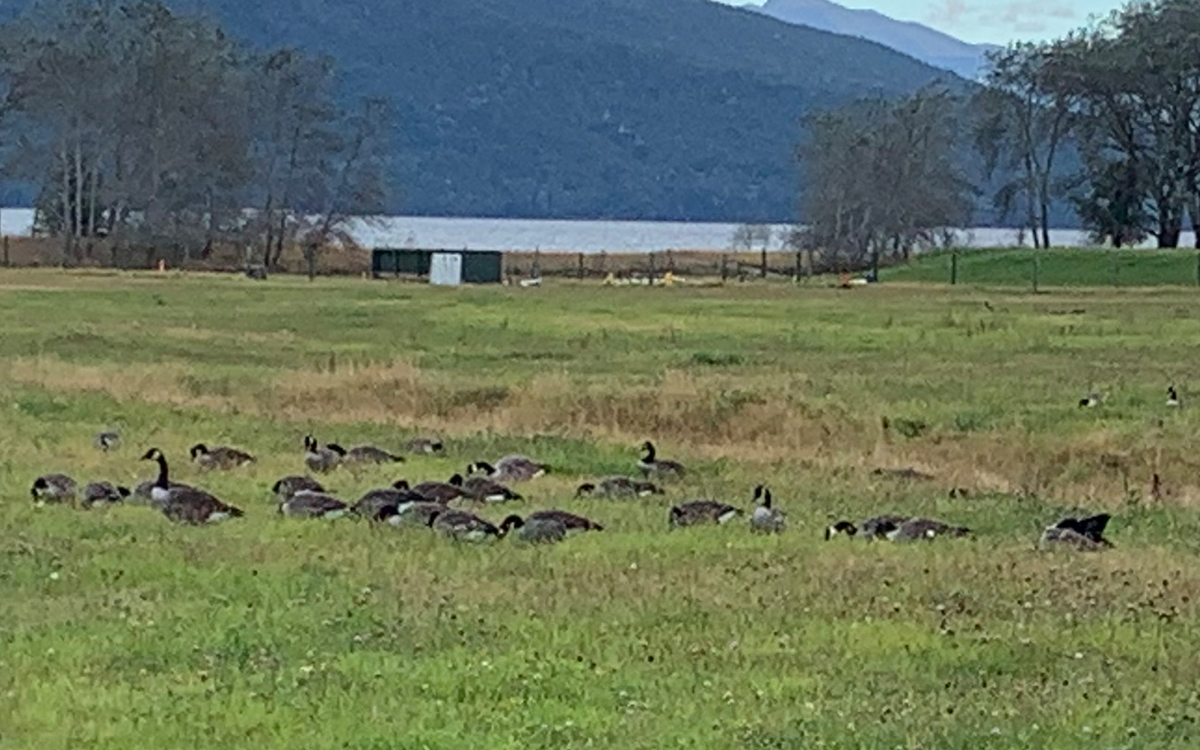Fiordland cries foul over Canada Geese problem
Jan Ludemann
23 March 2021, 3:55 PM
 Up to 400 geese regularly overnight within Te Anau township. Photo: David Pickett
Up to 400 geese regularly overnight within Te Anau township. Photo: David PickettA rising groundswell of voices are calling for a solution to the exploding population of Canada geese in the Te Anau basin.
The introduced fowl has an estimated population of between five thousand to six thousand in the region and that number is anticipated to continue to grow unchecked by about 30 percent each year.
In a recent informal and unaudited survey, about 400 people (roughly 10 percent of the local population) indicated that they would approve euthanising the geese to reduce and control the numbers while just six were unsure or against any action.

Canada goose excrement plasters a local Te Anau resident's windows, deck and roof as they come in to land in the adjoining reserve. Photo: David Pickett
A committee formed by local concerned residents, chaired by Brendan Mouat, has been tasked with formulating and implementing a long-term plan with viable options and, he said, that includes discussions with various government and local body and environmental organisations such as Department of Conservation, Environment Southland, Southland District Council, Forest and Bird and Fish and Game New Zealand.
Advertisement: Te Anau Signs
Advertise on the Southland App
According to information on Environment Southland website:
Canada geese were introduced into New Zealand in 1876. They cause significant damage to waterways and agricultural pasture and they consume a significant amount of pasture and stock crops when foraging. Their acidic droppings causes a decline in water quality in lakes, ponds, dams, streams and estuaries. Droppings from these geese can carry harmful bacteria such as E-Coli, Campylobacter and Salmonella. Mobs of geese can reach large numbers and pose a risk of bird strike.
They were protected under the Wildlife Act of 1953 and the population was managed by Fish and Game New Zealand who culled excessive bird numbers. However, the number of birds increased and by 1996 they had reached an estimated population of 40,000 in the South Island. In 2011 the government removed the protection status allowing anyone to kill the birds.
Advertisement: Te Anau Auto Electrical
Advertise on the Southland App
According to the latest information on Fish and Game New Zealand website:
The organisation has no authority to utilise licence holders’ funds or resources to assist with any future management or control of this species. However, all Fish & Game regions have agreed to assist with expertise regarding culls or management with relation to aviation threats (bird-strike issues), should assistance be sought and Canada geese may be hunted any time utilising any method – with the exception of poisoning (the Minister of Conservation ruled poisoning out as the risk of by-kill of other protected species was too great). This means Canada geese may be shot with rifles, shotguns, bows etc, from motorised boats or helicopters, on the ground, on the water or in the air, and during the moult – no limits and any time during the day or night.
Mr Mouat said the two biggest problems were that the geese’ habitat on lakes Te Anau and Manapouri was within the Fiordland National Park and that meant the group was limited in what they could do and that that was compounded with the birds having colonised in built up residential areas.
EVENTS





